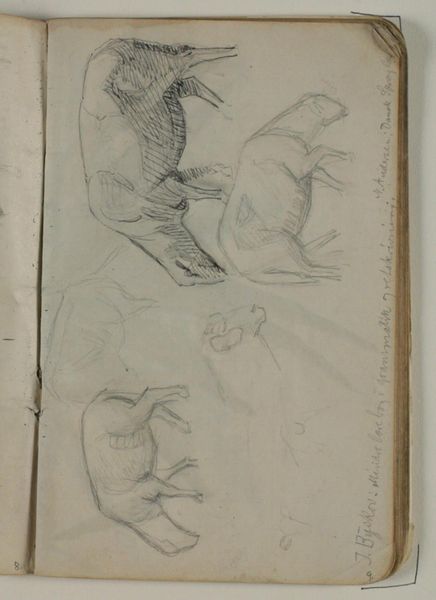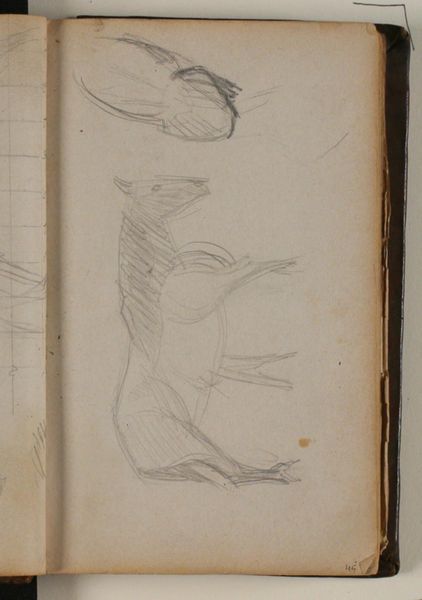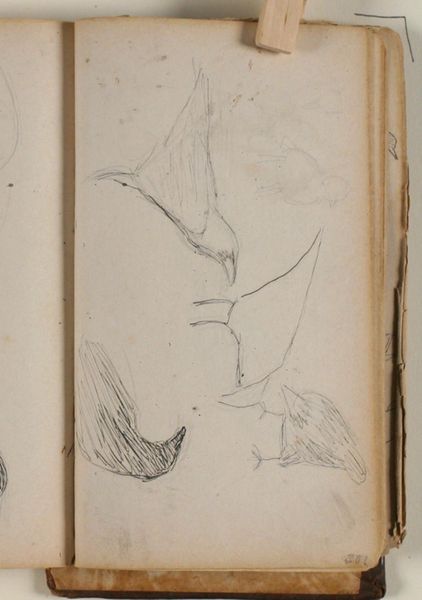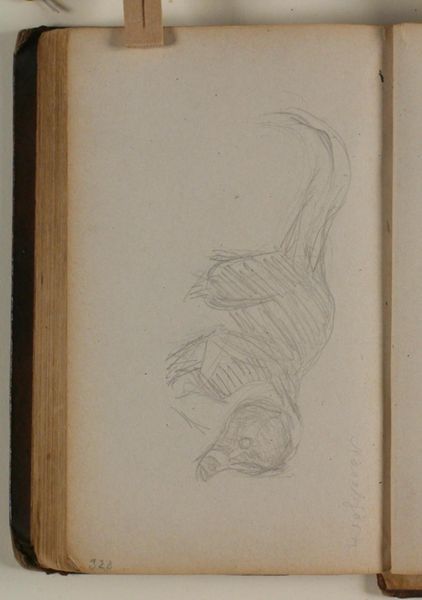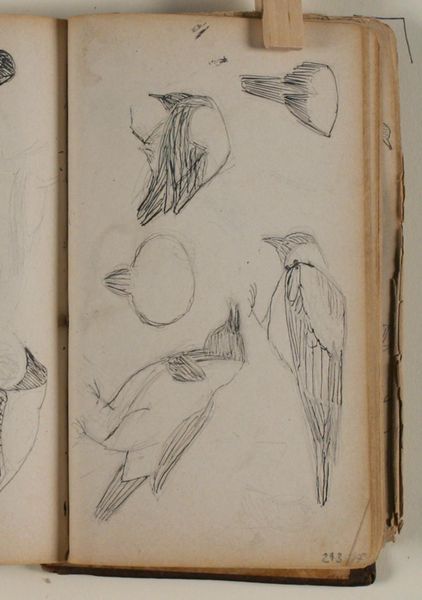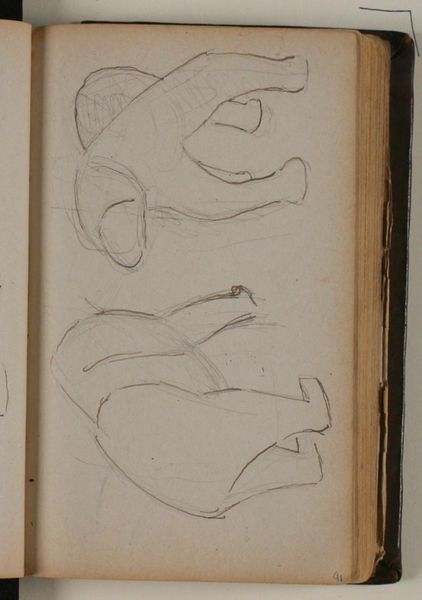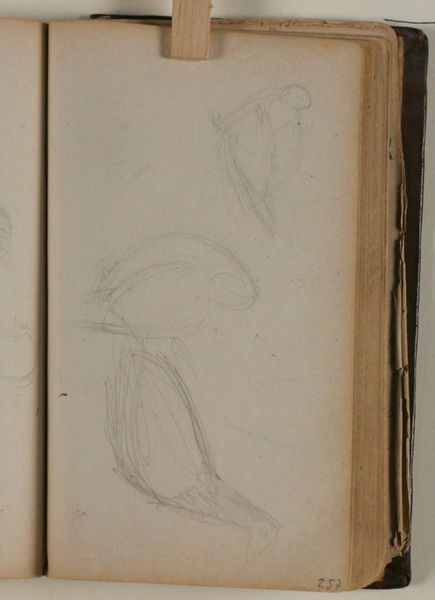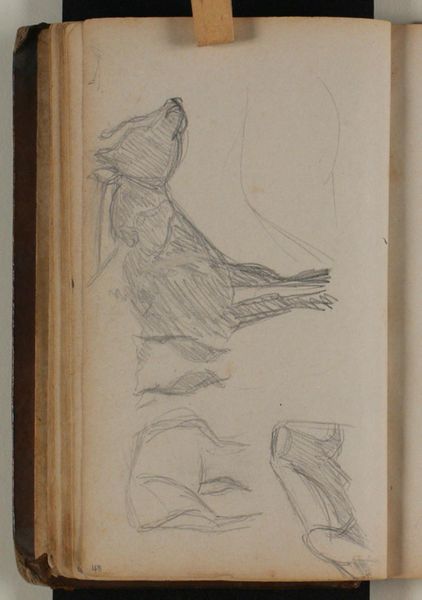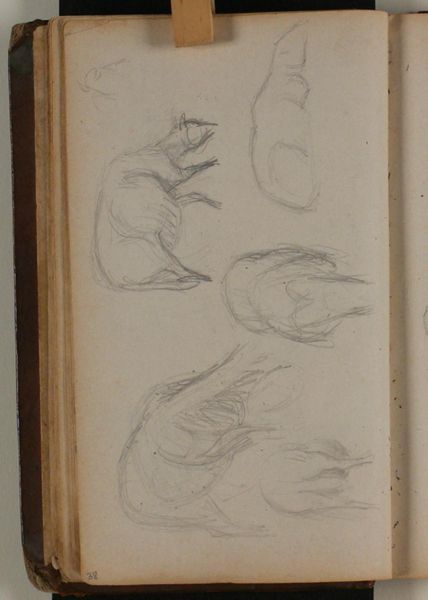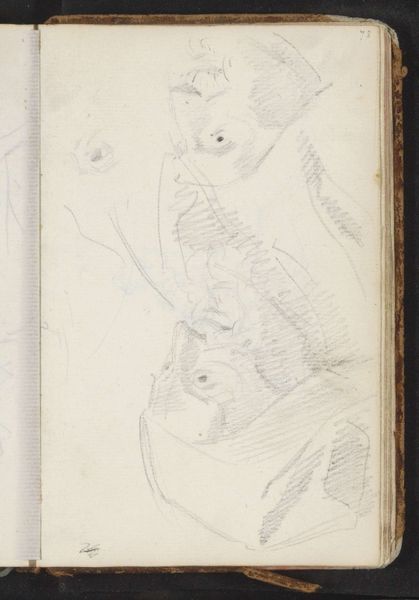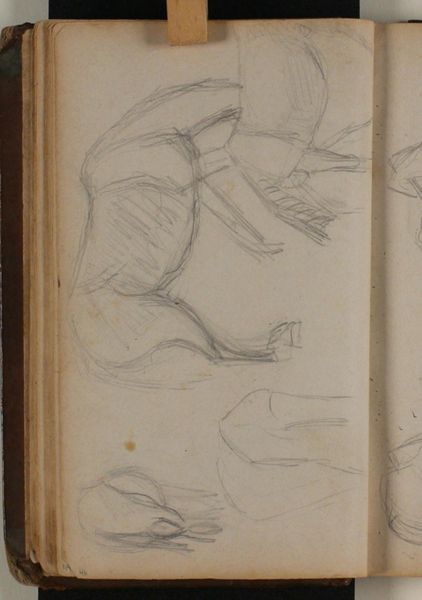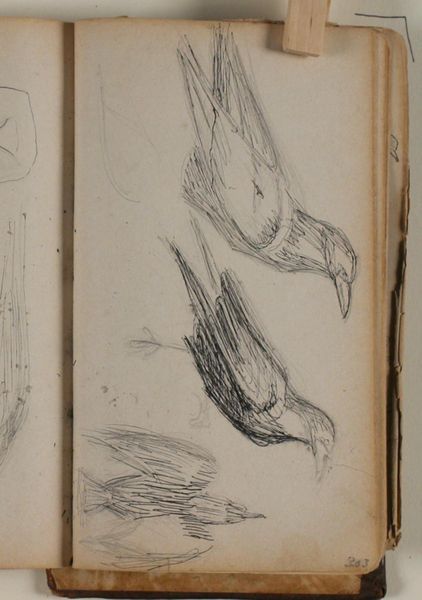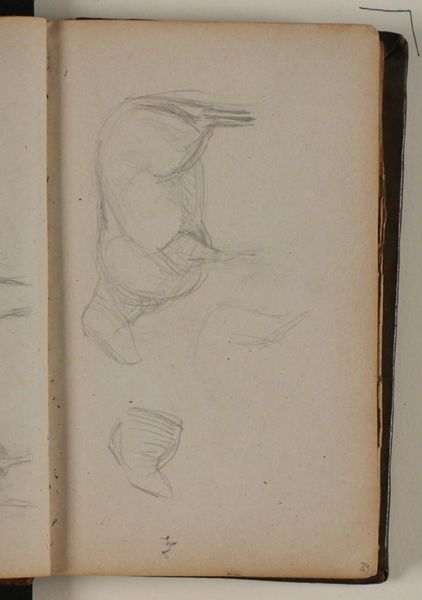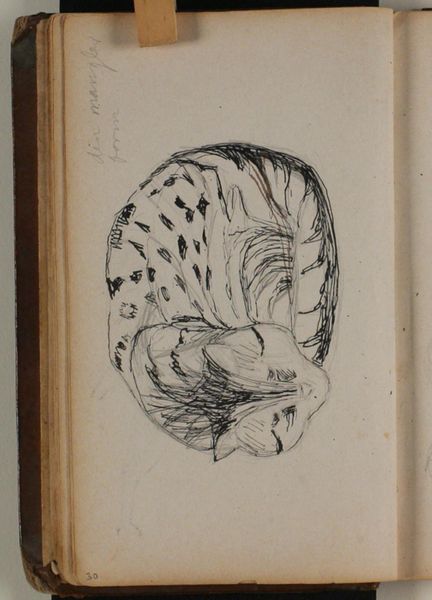
drawing, pencil
#
portrait
#
drawing
#
animal
#
pencil
#
realism
Editor: Here we have Niels Larsen Stevns' "Studies of a Wildcat," made sometime between 1864 and 1941 using pencil on paper. The drawings feel immediate and raw, almost like a fleeting glimpse into the animal's private moment. What stands out to you about this seemingly simple sketch? Curator: Immediately, I’m drawn to the material conditions of its production: the stark contrast of graphite on paper. A study like this speaks to the labor involved in the artistic process. Pencil, as a readily available tool, democratizes art-making. It challenges the elitist notion of ‘high art’ by highlighting accessibility and the everyday materials involved. Do you see the marks of the artist's hand, the deliberate yet quick strokes? Editor: I do. It feels like the artist was trying to capture the essence of the animal rather than a perfect likeness. Is it typical to display preliminary sketches in a museum setting? Curator: That's an interesting question. Traditionally, museums favored finished works, oil paintings for example. But exhibiting a study, a working drawing like this one, invites viewers to consider the means of artistic creation. We are focusing on process as a form of production that helps question hierarchies that privilege finality over method, complete over incomplete. In Stevns' era, where does animal representation fit into this dialogue about production and consumption? Editor: I see your point. The accessibility of the pencil, versus, say, oil paints, reflects a broader social shift. Presenting a study democratizes artistic creation and consumption, moving away from the exclusive patronage system. It is very interesting to consider artistic practice not just in art, but in society. Curator: Exactly. This wasn't just about artistic skill; it's about transforming the relationship between artist, artwork, and audience. We acknowledge labor, celebrate materiality, and dissect the social underpinnings of what gets deemed "art." Editor: That’s a really helpful way to understand it. I had never considered how the materials themselves can tell such a rich and socially relevant story. Thank you for your insights.
Comments
No comments
Be the first to comment and join the conversation on the ultimate creative platform.
